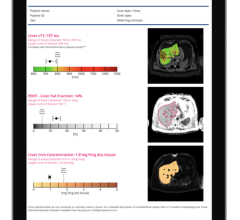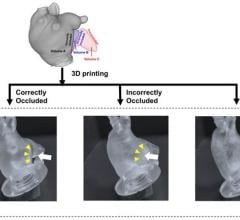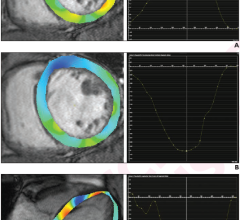
With higher deductibles and more price-conscious healthcare consumers, as a result of the Affordable Care Act, improving the performance, comfort and speed of MRI scans can be an important strategy for imaging centers that must compete by offering the best patient care and experience.
However, investing in the latest MRI model from GE or Siemens is often not an option for hospitals or clinics that have purchased a machine within the past eight years. Although completely adequate for the majority of scans that are routinely performed each day, newer 3T models now deliver higher resolution and faster scanning for improved diagnosis. They also cost well over a million dollars.
Fortunately, the MRI machine is not the only factor that affects image quality and speed. In many cases, upgrading the coils required to perform a scan and increasing the number of channels can deliver comparable improvements in signal-to-noise ratio for better image resolution.
Furthermore, a new breed of multi-purpose coil that is not limited to a specific anatomical region is providing imaging centers with more flexibility, greater patient comfort, the ability to accommodate larger or smaller sized parts of the body, and a host of other benefits.
Third party coil providers
For many years, rigid, anatomy-specific coils have dominated the market. Specialized clinics focusing predominantly on one area of the body might require several coils, but most imaging centers need as many as 5-7 different coils on hand.
When one of these coils needs to be replaced, it means purchasing a similar anatomical model, usually from the MRI manufacturer. A single multi-purpose coil, on the other hand, can replace multiple anatomy-specific coils.
Although the major MRI manufacturers now offer multi-purpose options, these are only compatible with the latest MRI scanners and not older models. Fortunately, new 8 channel multi-purpose coils, ideal for upgrading older systems using 1, 4 and 8-channel rigid coils, are now available for clinical use from select third-party providers.
While some medical equipment manufacturers have sought to bring multi-purpose coils to the market, the challenge has been to satisfy a rigorous, qualification process. For third-party MRI coils to be used for clinical applications, they must be CE marked, FDA approved, as well as approved by the MRI manufacturer for sale with a clinical coil I.D.
The first third-party supplier to meet these criteria for 1.5T GE scanners is MR Instruments. The company’s DuoFLEX Coil Suite of 8-channel coils – available in two sizes and an interventional option – utilizes a flexible design to deliver improved image quality. A Siemens 1.5T option, as well as 3T multi-purpose coils for both the major manufacturers, are currently in development and slated for release in 2015.
Benefits of Multi-Purpose, Flexible Coils
1. Higher image resolution
New multi-purpose MRI coils that increase the number of channels provide a significant improvement in resolution over older 1, 4 or 8-channel rigid coils.
In the coil industry, more channels for these phased array systems means more signal (information) and less noise for a clearer, sharper image. With more data available, multi-channel coils can be optimized for parallel imaging techniques that can reduce scan times as well.
“If you have an 8-channel MRI and 1 or 4-channel standard or anatomical coils, buying an 8-channel, multi-purpose flexible coil can provide better imaging, and more flexibility to meet clinical needs,” said Andreas Melzer, M.D., DDS, trained radiologist and professor of medical technology and founding director of the Institute for Medical Science and Technology (IMSaT), a joint venture of the Universities Dundee and St. Andrews, Scotland and GE’s first European Centre of Excellence for MRI guided Interventions and Surgery.
“The more channels you have, the less noise and more uniform the image typically will be because there are more channels detecting,” added Melzer.
Unlike rigid, anatomy-specific coils, multi-purpose coils also flexibly conform to many parts of the patient’s anatomy in regards to size and shape. This allows for as close a coil fit as possible, particularly in hard to reach areas for better imaging. It also enables imaging from angles or views not feasible with one-size-fits-all rigid coils. This helps to produce significantly better imaging that enables radiologists to make better, faster clinical determinations.
“The closer a coil’s position to the anatomy viewed, the stronger the signal. So a close, flexible fit with the patient’s anatomy will improve imaging,” added Melzer. “We’ve found the open, flexible fitting architecture of DuoFLEX coils provides very high-quality imaging that accommodates images from multiple angles. It combines this with more diagnostic and particularly interventional freedom for the abdomen, knee, wrist, spine, and shoulder. Traditional rigid coils, in contrast, are often closed in with harnesses, which hinders punctures, thermal ablation or injecting agents while the patient wears them.”
2. Better patient fit and comfort
In contrast to rigid anatomy-specific coils that may not properly fit a range of patient sizes, shapes, or difficult-to-image areas, multi-purpose, flexible coils allow simple placement of the coils over the desired anatomy for greater patient comfort, reduced motion, and improved overall image quality. This is achieved with interchangeable coil paddles in both 10 cm and 24 cm sizes that can be used independently or together, plus multi-length coil straps.
“Because the multi-purpose, flexible DuoFLEX coils accommodate differences in size, shape, and mobility, they can help achieve a better fit and image with less dependency on the individual patient,” said Melzer. “This is particularly true for younger pediatric patients, for which proper fitting, rigid coils are hard to find and the flexible coils provide a more suitable fitting.”
According to Melzer, the multi-purpose, flexible coils can also help when patient mobility issues are present. “MRI image quality can depend on both coil fit and the patient staying still to avoid a blurred image,” said Melzer. “If the patient moves because he’s uncomfortable with the coil, you’ve got a bad image.”
“Sometimes there are limitations in patient mobility or pain management that can make our lives difficult in MRI imaging if only standard, rigid coils are available,” said Melzer. “For instance, a patient may not be able to lie flat on the table in the proper position for a traditional, rigid spine coil. “In these types of cases, you can accommodate the patient with a flexible coil, and scan the spine with him or her lying on their side.”
3. Reduces need for costly anatomy-specific coils
While imaging centers have typically had to buy 5-7 separate rigid, anatomy-specific coils, multi-purpose, flexible coils enable replacing several of these costly, limited-use coils, which can save many thousands of dollars.
The cost of these separate rigid, anatomy-specific coils can quickly add up: head, spine, torso, shoulder, wrist, knee, foot/ankle, cardiac, pelvic, carotid, etc.
In contrast, easy positioning of multi-purpose, flexible coils is possible via interchangeable coil paddles plus multi-length coil straps. This allows coil placement in many positions, including wrapping the coils on the patient’s body. The result expands scanning coverage of the patient’s anatomy with fewer limited-use coils.
For instance, 10cm multi-purpose, flexible coils can be used to scan fingers, wrist, ankle, patella, forefoot/toes, as well as TMJs, orbits, and carotids. Similarly, 24cm multi-purpose, flexible coils can be used to scan shoulder, hip, pelvis, knee, cardiac, and elbow; and a combination of the 10cm and 24cm coils can be used to scan pediatric chest, pelvis, abdomen, elbow, head, spine, and extremities.
“Anatomy-specific coils such as for the wrist are expensive,” said Melzer. “We’ve found that a flexible coil suite like DuoFLEX’s can supplement or take the place of several rigid, anatomy-specific coils with equal or even better image quality.”
4. Saves time switching between anatomy-specific coils
With the recent rise in catastrophic medical insurance deductibles, patients and their families are becoming more cost conscious. This puts pressure on hospital and clinic imaging centers to get more use of their costly MRI equipment while delivering the best patient centered care possible.
One way that multi-purpose, flexible coils can help imaging centers is by minimizing the time needed to switch between different anatomy-specific MRI coils when imaging. Because multi-purpose, flexible coils can be used on a variety of body areas, this can eliminate coil change-out between scans in many cases, saving about 5-10 minutes of preparation each time.
Over the course of a day, this can increase the number of scans and clinic income per day. If an imaging center typically does 8 scans per day, an extra scan per day, for instance, could increase daily revenue from MRI scanning by 12%.
“Flexible MRI coils have the potential to save set-up time when switching between anatomy-specific coils,” concluded Melzer. “They would be good for fast, individually placed coil set-ups, including near full body scans in the case of cancer, or for individualized, pediatric, whole body scanning, and for MR guided interventions in particular.”
For more information: www.mrinstruments.com


 February 21, 2024
February 21, 2024 







